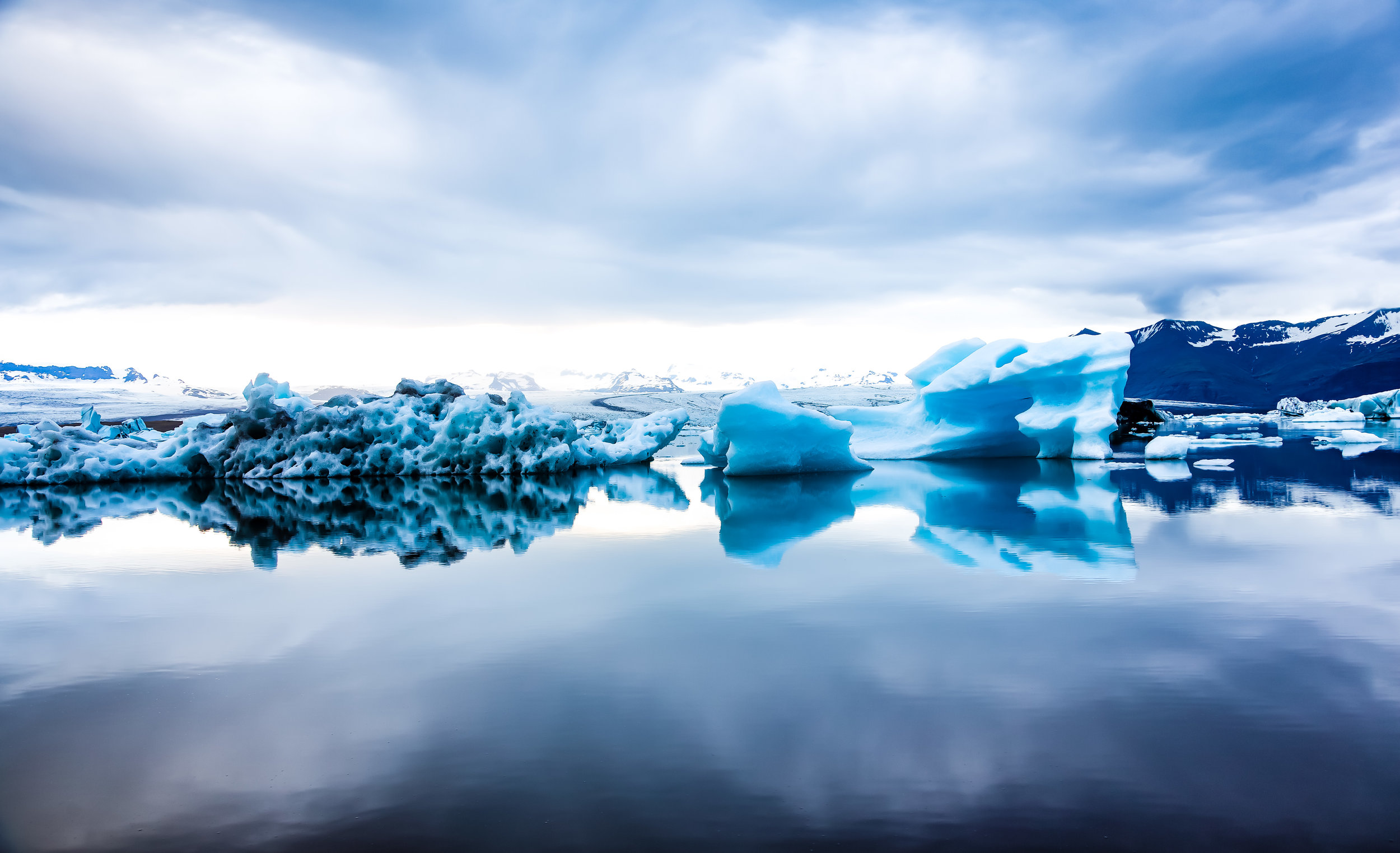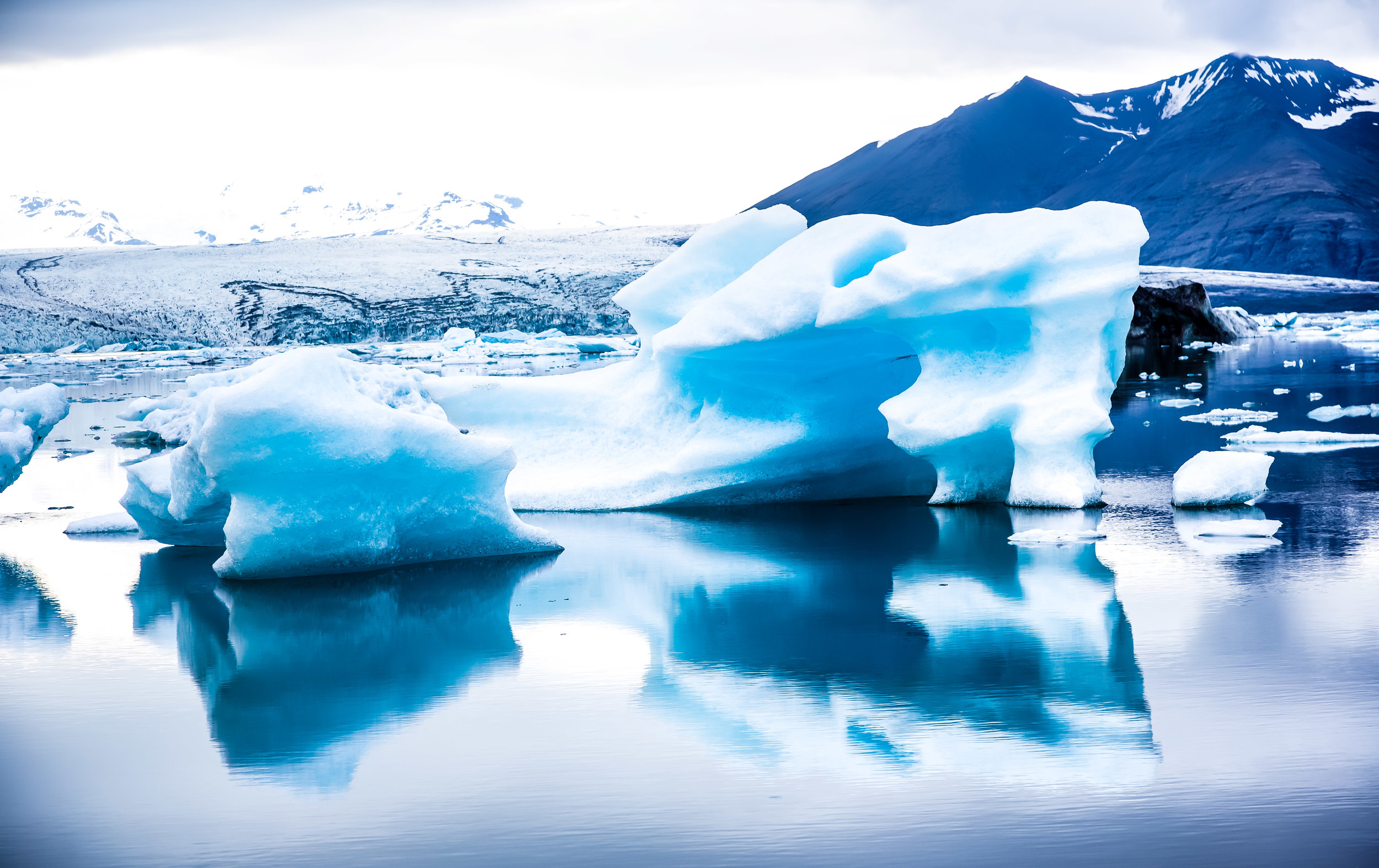After the first few days of travelling in Iceland, I was starting to get a bit tired of waterfalls. It seemed like every stop along the road was a bigger more beautiful waterfall than the one that preceded it.
Don’t get me wrong, I’m a big fan of waterfalls, but Iceland is certainly packed full of them.
That was of course until we reached the Southern Coast and started to enjoy the spectacular views of the ocean on one side with and giant mountains and glaciers on the other.
Even though a few of our stops along the Southern Coast of the country did include some waterfalls, the most memorable were the stops in places like the Dyrhólaey Lighthouse, Kirkjufjara Beach and the beautiful black sand Reynisfjara beach.
While each stop was picturesque and enjoyable, I don’t think any of them could have compared to our stop at the breathtakingly beautiful Jökulsárlón Glacier Lagoon.
I’m not exaggerating when I say that no amount of adjectives could really describe how we felt when we parked our car at a random parking lot along the highway, climbed up a small hill and discovered the prize hidden behind it.
It was one of those moments in life where your heart skips a beat and you feel so happy to be alive.
So, let me set the scene for you.
I was driving the car along the Southern Highway, it was late in the evening and we had just finished visiting Skaftafell National Park where we got up close to the Svínafellsjökull Glacier and then spent a few hours hiking to check out Hundafoss and Svartifoss.
We were a bit tired and were in somewhat of a rush to get to our hotel when I pulled into one of the many makeshift parking lots next to the road. I figured we wouldn’t spend much time in this spot, so I grabbed my camera and left my camera bag full of lenses and my tripod in the car.
We slowly climbed up the hill that acts as a barrier between the lagoon and the highway and once we got to the top our jaws dropped with the sheer beauty of what we saw.
Then, with a much quicker pace we walked back down the hill to where we parked the car and grabbed all of our camera gear - This wasn’t going to be a place where we would just be spending a few minutes taking photos.
The Glacier Lagoon
A popular location for tourists, photographers, nature lovers and filmmakers, Iceland’s Jökulsárlón Glacier Lagoon is widely regarded as one of the country’s most stunningly beautiful locations and attracts thousands of visitors every year.
The beauty of the lagoon is undeniable, but there is also a certain irony as its existence which should also serve as a reminder of the catastrophic effects of global warming and the damage we have done to our planet.
The lagoon formed in the early 1900s when the Breiðamerkurjökull Glacier started to retreat - Since its formation almost a century ago, the the surface area of the lagoon has grown to almost four-times its original size with a currently size of 18 km².
The Breiðamerkurjökull Glacier which provides the lagoon with its icebergs and most of its water is an outlet of the much larger Vatnajökull Glacier. Together the glaciers form the largest of its kind in Europe and covers almost ten percent of Iceland’s total land area (8,100 km²).
Don’t let the size of the glacier fool you though, it is still retreating at an alarming rate with evidence that Breiðamerkurjökull alone has lost an estimated three square kilometres in land mass over the last century.
Most alarming is that the less than a century old glacial lagoon has become Iceland’s deepest lake with a current depth of around 248 meters - all of which used to be composed of ice.
The icebergs that float around in the lagoon are chunks of the glacier that have broken off due to rising temperatures. Those huge chunks of ice that float around in the lagoon are often more than a thousand years old and once they’ve broken off from the iceberg more or less float around in the lagoon for around five years before they are eventually small enough to float out to sea.
Even though most of the water in the lagoon comes from the melting of the glacial ice, salt water is also mixed in as the lagoon has a river mouth that meets up with the Atlantic Ocean. The mixture of fresh and salt water allows for a large variety of fish (salmon, herring, trout and krill among others) to swim upstream and settle in the area.
The large supply of fish in turn makes the lagoon an ideal feeding ground for migratory sea birds and seals, both of which can be seen hunting for food.
Another feature of the mixture of fresh and salt water is that it transforms the icebergs into either a milky shade of white or into a bright blue colour.
The bright blue icebergs in particular which appear almost diamond-like become even more beautiful once the icebergs become small enough to float out to sea through the river mouth. Once they float out to sea they’re often pushed back into the shore which has created an additional attraction that has become known as the Diamond Beach.
When visiting the lagoon there are a few things you’ll want to keep in mind:
The first thing is that no matter what season, the water is extremely cold. If you climb down the hill to the shore, be very careful not to get too close to the water. Full body exposure to the water for less than a minute is enough to turn you into an iceberg.
The second thing you’ll want to pay attention to is where the sea-birds are nesting. The birds tend to be very territorial and they are not afraid of humans. If you get too close, especially if they’re nesting you may get swarmed.
You’ll also want to keep in mind that drone photography is strictly prohibited in the area.
There are many places around Iceland where drones are banned but here at the lagoon it’s important to keep in mind that flying a drone is dangerous and will interrupt the nesting and feeding of the birds. As mentioned above, the birds are extremely territorial and are likely to attack, so if you care about your flying camera, you may want to leave it in its case while visiting.
Getting There
The Jökulsárlón Glacier Lagoon is around a 370km drive (around 4.5 hours) from the capital city of Reykjavik.
Situated about halfway between the southern towns of Vik and Höfn, getting to the lagoon is quite simple as it is just a stop along the southern highway.
It probably isn’t really a suitable destination for a day-trip out of the capital but if you are spending any time on your trip to Iceland in the southern portion of the country you should definitely make a stop.
If you’ve decided that you’re not going to bother renting a car while visiting Iceland, you’re going to have to rely on public transportation to get to where you want to go. There are tours out of the capital offered by tour groups like Reykjavik Excursions which offer tourists access to several different destinations. It is important to remember that if you want to book a tour that you should do so well in advance as the seats on the daily tours tend to fill up quickly.
Checking out the lagoon on your own is of course free of charge with free parking as well but you may also want to consider some of the boat tours of the lagoon offered by some of the various tour operators in the area.
Extreme Iceland - Jokulsarlon Glacier Lagoon Tours & Packages
Glacier Lagoon - Amphibian Boat Tour
Arctic Adventures - Jökulsárlón Glacier Lagoon Tours
Reykjavik Excursions - Jokulsarlon Glacial Lagoon / South Coast Tour
If your trip to Iceland doesn’t include the southern portion of the country, you’re really missing out - Some of the most breathtaking sights you’re going to see are located in the south and this glacier lagoon might just be the icing on the cake. I’m not sure that photos could really do this place the justice it deserves - You have to see it with your own eyes to truly appreciate how beautiful and peaceful this glacial lagoon is.
Of all the destinations in Iceland, this one should be at the top of every travellers list.













